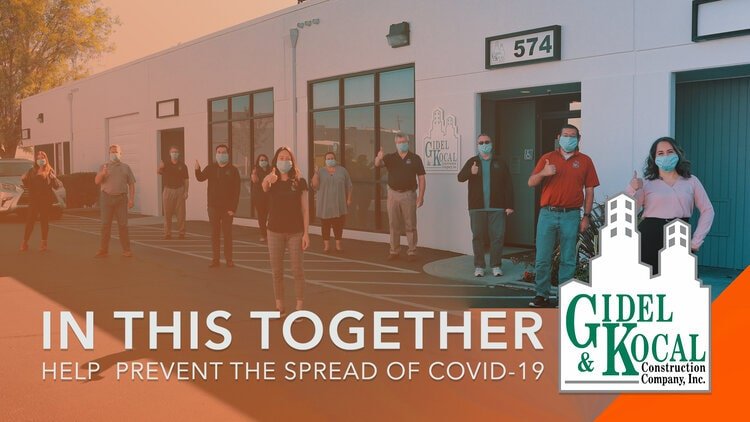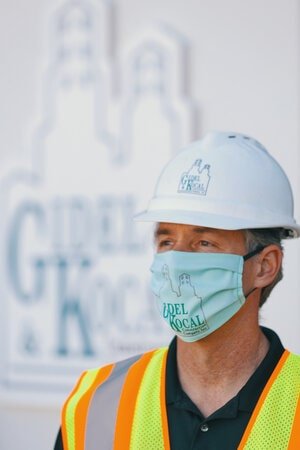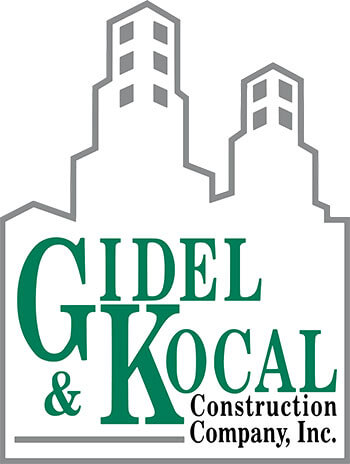COVID-19 is here to stay for now. Here is some useful information for our workers and community on the illness. Taken directly from Centers for Disease Control and Prevention as of May 19, 2020.

Coronavirus disease 2019 (COVID-19) is a respiratory illness that’s caused by a virus called SARS-CoV-2. Our understanding of how the spread of the virus is evolving as we find out more about it, so check the CDC website for the latest information and current list of symptoms. The virus is considered to mainly spread from person to person:
- Between people who’re in close contact with each other (within about 6 feet).
- By means of respiratory droplets produced when a person who’s infected talks, sneezes, or coughs.
Recent studies indicate that the virus can be spread by people who are not showing symptoms. It may be possible that a person can get COVID-19 by touching an object or surface with the virus on it and then going and touching their own nose, mouth, or maybe their own eyes. This isn’t considered to be the usual way the virus does its spreading, but we are still learning more about this virus. Adults who are older and people of any age who have underlying serious medical conditions might be at higher risk for a severe illness from COVID-19.

What steps should my employer take?
Employers must have a COVID-19 response plan in order to have workers protected, following CDC Interim Guidance for Employers and Businesses, and share this plan with you and your coworkers in languages you all understand. Small construction businesses should review the CDC small business guidelines. Your employer should take steps to:
Reduce transmission among workers:
- Take steps to help prevent the spread of COVID-19 if an employee is sick.
- Actively encourage employees who are sick to stay home.
- Employees who are sick and diagnosed with COVID-19 should not come back to work until the discontinuation of home isolation criteria is met, in consultation with healthcare providers and state and local health departments.
- Provide employees with accurate information (in a language they understand) about COVID-19, how it spreads, and risk of exposure.
- Provide workers with basic facts.
- Conduct toolbox talks on all job sites to explain the protective measures in place.
- Be aware that some employees may be at higher risk for a severe illness, such as older adults and those with underlying medical conditions. Implementing certain policies so that face-to-face contact for these employees is minimized or assigning work tasks that let them maintain a distance of 6 feet at least from other workers, visitors, and customers, or if possible, to telework.
- Provide employees with training on appropriate handwashing practices and other measures that are routine preventative. This will help in preventing the spread of lots of diseases, which include COVID-19.
- Provide employees with access to soap, clean running water, and materials for drying their hands, or if water and soap aren’t readily available provide alcohol-based hand sanitizers that contain at least 60% alcohol at stations around the establishment for use by both workers and customers.
- Place handwashing stations and/or hand sanitizers in multiple locations (including in or adjacent to portable restrooms) to encourage hand hygiene.
- Explore ways that are alternative to promote hand hygiene if there’s trouble sourcing hand sanitizer & running water on site isn’t available. Some examples could include:
- Install mobile or temporary handwashing stations, to ensure there’s an adequate supply of single-use paper towels, soap, and water.
- Provide a large (5+ gallon) bucket with a lid and tap that can be used to provide water for handwashing. If this approach is utilized, the water tap should regularly be disinfected and cleaned, and the dirty wastewater should be collected & treated in accordance with local laws and environmental regulations. Provide fresh clean water daily.
- Depending on the configuration or size of the job site, there might need to be several handwashing stations available for the workforce to be accommodated while having social distancing maintained, and stations might require to be restocked throughout the day in order to maintain adequate handwashing supplies.
- Social distancing guidance should be developed and implemented for the workplace to maintain a distance of at least 6 feet between every worker when possible.
As a construction worker, how can I protect myself and slow the spread?
Potential exposure sources include having very close contact with coworkers or members of the public who are ill with COVID-19 and touching your eyes, mouth, or nose after touching surfaces that are contaminated with the virus or even handling items that are infected with COVID-19 through those who had touched it. Actions you can take include the following:
- Notify your supervisor and stay home if you have symptoms.
- Follow CDC-recommended steps if you are sick. You shouldn’t return to work until the discontinuation of home isolation criteria is met, in consultation with healthcare providers, your employer, and state and local health departments.
- Follow CDC-recommended precautions and notify your supervisor if you are well but have a sick family member at home with COVID-19.
- Limit close contact with others by maintaining a distance of at least 6 feet, when possible.
- Limiting the amount of workers in tiny workspace areas like job site elevators, vehicles, trailers, and also spaces under construction if possible.
- CDC recommended to wear cloth face coverings in public settings where other social distancing measures are hard to maintain, particularly in areas where there is a significant community-based transmission of COVID-19.
- Cloth face coverings could prevent people who do not know they’ve got the virus from transmitting it to others.
- Cloth face coverings AREN’T respirators or surgical masks and aren’t proper substitutes for them in workplaces where respirators or masks are required or recommended.
- Clean and disinfect frequently touched surfaces like shared vehicles, machines, tools, and other equipment, portable toilets, doorknobs, ladders, and handrails. Periodically disinfect and clean frequently touched surfaces throughout the shift but also:
- At the beginning & end of every shift
- After anyone uses your vehicle, tools, or workstation
- Limit tool sharing if possible.
- Practice proper hand hygiene. This is a vital infection control measure. With proper hand hygiene, you don’t need gloves to protect yourself from COVID-19. When possible, get your hands regularly washed with water and soap for 20 seconds at least, or use an alcohol-based hand sanitizer containing at least 60% alcohol.
- Key times to clean hands include:
- Before & after work shifts & breaks
- After sneezing, coughing, or blowing your nose
- Prior to eating and before & after preparing food
- After objects are touched and handled by coworkers, such as equipment and tools
- Before putting on and after taking off work gloves
- After using the restroom
- After putting on, touching, or removing cloth face coverings
- Before doffing or donning eye or face protection (goggles, safety glasses, etc.)
- Before & after work shifts & breaks
- Don’t touch your mouth, nose, and eyes.
- When you sneeze, cough, or touch your face, use tissues. Throw used tissues in the trash and wash your hands or use a hand sanitizer containing 60% alcohol if a sink to wash your hands is not available.
- Key times to clean hands include:
Maintain a healthy environment for work
- Institute measures to physically separate and increase the distance between employees, such as the following:
- Work schedules to be modified to stagger work, provide extra shifts or alternate workdays to lessen the total number of workers on job sites at any time.
- Restricting access to decrease the amount of workers in confined & enclosed areas at one time. Confined and enclosed areas (e.g., trailers and small rooms in buildings under construction) must be identified and access must only be restricted to essential personnel. Enclosed spaces (e.g., break areas, toilets) are areas of possible transmission and should therefore be treated. The amount of time spent in these areas must be minimized.
- Rearrange administrative area workstations so that workers can stay at least 6 feet away from other workers.
- Install shields or barriers, such as plexiglass barriers, where possible.
- Rearrange or remove tables and chairs, or in break areas, add visual cue marks to support practices in social distancing between workers. Identify alternative areas in order to accommodate volume overflow.
- Disinfect lunch or break room areas between each group utilizing the areas.
- Maintain social distancing when visiting construction site vendors or lunch trucks.
- Limit social (casual) conversations that usually happen at work.
- Whenever possible, postpone or cancel in-person trainings/meetings. If you should meet, between attendees, keep a distance of 6 feet or more.
- Reducing the number of individuals at meetings, which includes worker orientations, to widen the distance between individuals.
- Conduct a hazard assessment to determine if hazards are present, or are likely to be present, for which workers may need personal protective equipment (PPE). OSHA & CDC have recommended PPE for particular work activities when administrative and engineering controls can’t be implemented or aren’t fully protective.
- Employers are required to determine, select, provide, and train on correct PPE use and application for their workers’ specific job duties (see 29 CFR 1926 Subpart Eexternal icon).
- Place posters that encourage people to stay home when coughing, sick, and sneezing etiquette, signs & symptoms of COVID-19, and proper hand hygiene practices at entrances to the workplace and in other areas of the workplace where they’re likely to be seen.
- Provide no-touch disposal receptacles and tissues for employees to use.
- Disinfect and clean surfaces that are frequently being touched. If surfaces are visibly dirty, clean them before disinfecting. To disinfect, make use of products that meet the EPA’s criteria to tackle SARS-CoV-2external icon, diluted household bleach solutions that are prepared in accordance with the manufacturer’s disinfection label, or alcohol solutions with 70% alcohol at least, and that are appropriate for the surface. Follow the manufacturer’s directions for use.
- Clean workspaces and breakrooms at least once per shift or as often as workers change workstations.
- Provide training for workers on manufacturer’s directions for disinfectant usage and give workers any additional PPE needed for disinfection.
- Provide disposable disinfectant wipes (when available) so that surfaces that are frequently touched could be wiped down.
- Follow all applicable local, state, and federal regulations and public health agency guidelines.
Maintain healthy business operations
- Designate a health & safety officer to be responsible for responding to concerns related to COVID-19 at all job sites. Workers must know who this person is and how to contact them.
- Implement flexible sick leave and supportive policies and practices. Consider drafting non-punitive emergency sick leave policies if sick leave is not offered to some or all employees. Employers should not require a positive COVID-19 test result or a healthcare provider’s note for employees who are sick to validate their illness, qualify for sick leave, or to return to work.
- Provide information on whom to contact if employees become sick. If an employee is confirmed to have COVID-19 infection, employers must inform fellow employees of the likelihood of them being exposed to COVID-19 in the workplace while also maintaining confidentiality as needed by the ADA (Americans with Disabilities Act).
- Reach out to local public health officials to establish ongoing communications to facilitate access to relevant information before and during a local outbreak.
